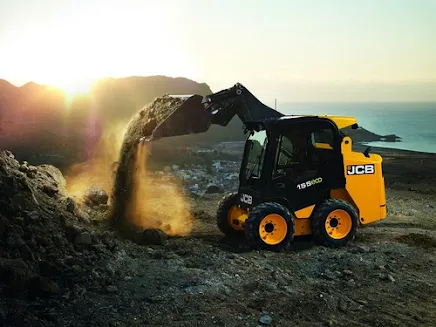Earthmoving equipment are machinery that are used for digging and moving large amounts of soil and for constructional works. These machinery are large in size and have high tones of weight.
Earthmoving equipment began revolutionalizing the world from 18th century as they are being used for construction of road networks, factory construction projects and national building projects.
Construction sites are filled with different types of earthmoving machines, each with its own purpose and functionality. Most heaby earthmoving machines are empowered by a diesel engine, which provides the necessary energy to operate the machine and its hydraulic system.
Explore in this article, five (5) most common and heavy earthmoving machines used in construction.
Bulldozer:
Bulldozer machine has large and flat blade that is used to push materials like dirt, sand and gravels. Bulldozers are often used to clear land and create level surfaces for construction projects.
The blade of bulldozer is controlled hydraulically, allowing the operator to raise, lower, tilt or angle the blade as needed. The blade's position and angle determine how the material is pushed eiether in a striaght line or to the side.
Excavator:
Excavator has a long arm with bucket attached to it. It is used to dig and move large amounts of dirt, rock and debris. Excavators are commonly used for digging foundations, trenches and even for demolition work.
They have a hydraulic system that facilitates their operations. Hydraulic pumps pressurize hydraulic fluid, that pass through valves to actuators (cylinders). These cylinders control the movement of the boom, arm, bucket and other attachments.
Backhoe loader:
Backhoe loader machine has a bucket on the front and a backhoe on the rear. It is a versatile machine that can be used for variety of tasks like digging, loading and grading.
Backhoe loaders are commonly used on construction sites to move materials and excavate areas.
The loader bucket (front attachment) is controlled by hydraulic cylinders, which provide the necessary movement and force. The backhoe (rear attachment) is operated by hydraulic levers in the cab, giving the operator control over the precision and power needed to dig trenches, lift heavy objects or manipulate materials.
The backhoe also has stabilizer legs that extend to provide balance and prevent the machine from tipping during heavy digging operations.
Skid steer loader:
It is small and compact machine, with a bucket on the front. Skid steer loaders are agile and versatile, making them ideal for working in tight spaces or on projects with limited access. They are mostly used for landscaping, grading and snow removal.
Skid steer loaders typically have four wheels or in some models, tracks. The wheels on each side are fixed in straight alignment (non-steerable) and the machine turns by skidding or digging its wheels on one side while the other side moves.
The hydraulic system of skid steer loader is central to the loader's operation. It controls both the lift arms and attachments.
Motor grader:
Motor grader machine has a long blade that is used to create flat surfaces. It is commonly used for road construction and maintenance, as well as for creating level surfaces for building foundations.
Motor grader's most important tool is the moldboard or blade, located under the machine's frame between the front and rear wheels. The blade is used to cut, move and spread materials such as soil, gravel or snow to create smooth surface.
The hydraulic system controls the blade and other attachments. It powers the cylinders that move the blade up, down, tilt and shift as needed.

.jpeg)






.jpeg)





.jpeg)

Please share your thoughts with us